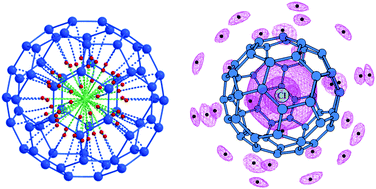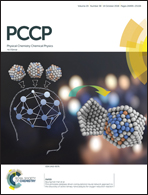Anion-encapsulating fullerenes behave as large anions: a DFT study†
Abstract
M06L/6-311++G(d,p)//M06L/6-31G(d,p) level density functional theory studies show that the endohedral reaction of C60 with X− (X = F, Cl, Br, OH, NH2, NO2, CN, and ClO) is exothermic by 37.8–65.2 kcal mol−1. The exothermic character of the reaction is drastically reduced in polar and nonpolar solvents due to the lack of direct solvation influence on the encapsulated anion. In all X−@C60, the occupied frontier molecular orbitals (FMOs) are located on X− while the energy levels of FMOs centered on C60 are very similar to those of the C60− radical anion. Molecular electrostatic potential (MESP) analysis of X−@C60 revealed that the negative character of the MESP minimum (Vmin) on the carbon cage increases by ∼72 fold compared to C60, which is very similar to the enhancement in the negative MESP observed on the C60− radical anion. The MESP data and quantum theory of atoms in molecules (QTAIM) analysis of charge, electron delocalization index, and Laplacian of bond critical point (bcp) support significant electron sharing from the anion to the carbon atoms of the fullerene cage, which makes the cage behave like a very large anion in a closed shell configuration. The data are also supportive of a multicenter charge-shift type of bonding interaction between the anion and the carbon cage. The anionic nature of the fullerene cage has been verified in the cases of larger systems such as Cl−@C70, Cl−@C84, and Cl−@C90. The binding of a counter cation K+ with X−@C60 is found to be highly exothermic (∼72 kcal mol−1) and very similar to the binding of K+ with the C60− radical anion (72.9 kcal mol−1), which suggests that C60 in X−@C60 behaves as a closed shell anion.



 Please wait while we load your content...
Please wait while we load your content...